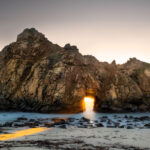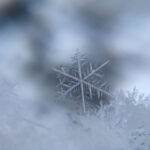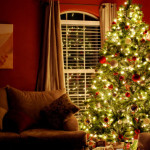I’m using the term on-camera to make a distinction between portable strobes and the type of lights used primarily indoors that require a wall plug for electricity and have built-in modeling lights.
I hesitate to call them portable because I can guarantee that if you get a set of studio flashes or monolights, the second thing you’ll want to do with them is use them outside. Good photographers wait for the light; great photographers command it. To keep this focused, I’m going to stick with on-camera strobes.
A single strobe on the hot shoe of your camera can be surprisingly useful. Some photographers prefer to mount their portable strobe on a bracket, but that practice is being utilized less often these days. In the old days, there was no direct communication between the camera and the strobe. Today the camera and strobe are constantly communicating to cut down on glare and reflections and to deliver soft, even lighting.
The great thing about a good on-camera strobe is you can still put it in a softbox or umbrella and use it indoors. You’ll have to work with the lighting closer to your subject. With few exceptions, a battery-powered strobe simply isn’t going to be able to match plug-in power.
Brand Name Products
At the top of the line are name brand products like the Canon 680EX-RT ($499), the replacement for the 580 EX II, and the Nikon SB-910 ($559). These units are eye-poppingly expensive, but they cost a lot for a good reason, and that reason is they deliver reliable light and help to produce excellent shots. There’s no fear that when you push the button, the strobe won’t fire. The communication between the camera, lens, and strobe makes for amazing images.
There’s another level above the name brand strobes, with models like the Quantum Qflash, which are basically battery-powered studio flashes. They are wonderful lights but overpriced, in my opinion.
Second Tier Strobes
Both of the big name brands in camera equipment also offer slightly less powerful models, such as the Canon 430EX II ($259) and the Nikon SB-700 ($326). You’re sacrificing some power but still getting a light that communicates with the camera and lens to create near-perfect lighting.
Third Party Strobes
Yongnuo is quickly becoming the biggest name in third-party on-camera strobes that have some compatibility with Canon’s and Nikon’s electronic metering. Yongnuo had some problems related to capacitors in 2011 and 2012 that they seem to have cleared up. All the same, it’s wise to order them from a retailer with a generous return policy in case you get a clunker.
The Yongnuo YN-565EX ($159) claims to support Canon’s and Nikon’s electronic metering systems, but I can tell you from experience that it is not always a steady relationship. All the same, I’ve shot paid jobs with Yongnuo products and have had excellent results. I also have several backup flashes I can bring along in case something goes wrong.
Third party strobes are fine for those just starting out or pros who have enough backup equipment around to make a substitution if a piece of equipment goes off the rails.
About the Author
Peter Timko writes on behalf of Proud Photography, which offers online photography courses on a variety of subjects.
Like This Article?
Don't Miss The Next One!
Join over 100,000 photographers of all experience levels who receive our free photography tips and articles to stay current:










Leave a Reply